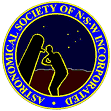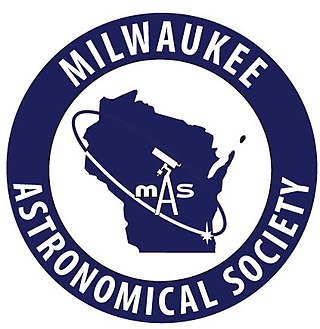
An astronomer is a scientist in the field of astronomy who focuses their studies on a specific question or field outside the scope of Earth. They observe astronomical objects such as stars, planets, moons, comets and galaxies – in either observational or theoretical astronomy. Examples of topics or fields astronomers study include planetary science, solar astronomy, the origin or evolution of stars, or the formation of galaxies. A related but distinct subject is physical cosmology, which studies the Universe as a whole.

Amateur astronomy is a hobby where participants enjoy observing or imaging celestial objects in the sky using the unaided eye, binoculars, or telescopes. Even though scientific research may not be their primary goal, some amateur astronomers make contributions in doing citizen science, such as by monitoring variable stars, double stars, sunspots, or occultations of stars by the Moon or asteroids, or by discovering transient astronomical events, such as comets, galactic novae or supernovae in other galaxies.

A star party is a gathering of amateur astronomers for the purpose of observing objects and events in the sky. Local star parties may be one-night affairs, but larger events can last a week or longer and attract hundreds or even thousands of participants. Many astronomy clubs have monthly star parties during the warmer months. Large regional star parties are held annually and are an important part of the hobby of amateur astronomy. A naturally dark site away from light pollution is typical.

The Royal Astronomical Society (RAS) is a learned society and charity that encourages and promotes the study of astronomy, solar-system science, geophysics and closely related branches of science. Its headquarters are in Burlington House, on Piccadilly in London. The society has over 4,000 members, known as fellows, most of whom are professional researchers or postgraduate students. Around a quarter of Fellows live outside the UK.

The Astronomical Society of the Pacific (ASP) is an American scientific and educational organization, founded in San Francisco on February 7, 1889, immediately following the solar eclipse of January 1, 1889. Its name derives from its origins on the Pacific Coast, but today it has members all over the country and the world. It has the legal status of a nonprofit organization.
The Astronomical League is an umbrella organization of amateur astronomy societies. Currently their membership consists of over 330 organizations across the United States, along with a number of Members-at-Large, Patrons, and Supporting members.
Terence Dickinson was a Canadian amateur astronomer and astrophotographer who lived near Yarker, Ontario, Canada. He was the author of 14 astronomy books for both adults and children. He was the founder and former editor of SkyNews magazine. Dickinson had been an astronomy commentator for Discovery Channel Canada and taught at St. Lawrence College. He made appearances at such places as the Ontario Science Centre. In 1994, the International Astronomical Union committee on Minor Planet Nomenclature named asteroid 5272 Dickinson in honour of his "ability to explain the universe in everyday language".

Astronomy is a monthly American magazine about astronomy. Targeting amateur astronomers, it contains columns on sky viewing, reader-submitted astrophotographs, and articles on astronomy and astrophysics for general readers.

Popular Astronomy is the bi-monthly magazine of the UK's Society for Popular Astronomy, published in January, March, May, July, September and November.
The Royal Astronomical Society of Canada (RASC) is a national, non-profit, charitable organization devoted to the advancement of astronomy and related sciences. At present, there are 30 local branches of the Society, called Centres, in towns and cities across the country from St. John's, Newfoundland, to Victoria, British Columbia, and as far north as Whitehorse, Yukon. There are about 5100 members from coast to coast to coast, and internationally. The membership is composed primarily of amateur astronomers and also includes numerous professional astronomers and astronomy educators. The RASC is the Canadian equivalent of the British Astronomical Association.

The International Year of Astronomy (IYA2009) was a year-long celebration of astronomy that took place in 2009 to coincide with the 400th anniversary of the first recorded astronomical observations with a telescope by Galileo Galilei and the publication of Johannes Kepler's Astronomia nova in the 17th century. The Year was declared by the 62nd General Assembly of the United Nations. A global scheme, laid out by the International Astronomical Union (IAU), was also endorsed by UNESCO, the UN body responsible for educational, scientific, and cultural matters.
The Association of Lunar and Planetary Observers is an international scientific and educational organization established in March 1947 in the United States by Walter H. Haas, and later incorporated in 1990. ALPO is an organization for advancing and conducting astronomical work by both professional and amateur astronomers who share an interest in Solar System observations. It is currently headquartered in Springfield, Illinois.

David John Eicher is an American editor, writer, and popularizer of astronomy and space. He has been editor-in-chief of Astronomy magazine since 2002. He is author, coauthor, or editor of 23 books on science and American history and is known for having founded a magazine on astronomical observing, Deep Sky Monthly, when he was a 15-year-old high school student.
On May 31, 1989, seven amateur astronomers held an organizational meeting in the Solar Classroom at Hamilton College in Clinton, New York, to plan the formation of an astronomy club. By-laws were prepared by Richard Somer, approved by the group, and the Mohawk Valley Astronomical Society was born. The founders were Richard Somer, Arlene Somer, Joe Perry, Sam Falvo, Dan Pavese, John Ossowski, and Phil Marasco.

The Astronomical Society of Glasgow (ASG) was founded in 1954 in Glasgow, Scotland, by amateur astronomers and is dedicated to promoting an interest in Astronomy.
The Society for the History of Astronomy is an organisation based in the United Kingdom that promotes research into the history of astronomy. It publishes a research journal called The Antiquarian Astronomer and a regular Bulletin.

The Astronomical Society of New South Wales (ASNSW) is an amateur astronomy club in the state of New South Wales, Australia, founded in 1954.

The Astronomical Society of Victoria (ASV) is an amateur astronomy club in the state of Victoria, Australia. It was founded in 1922, making it one of the oldest such clubs in the country, and with some 1500 members it claims to be one of the largest amateur astronomy organisations in the southern hemisphere. Membership is open to all with an interest in astronomy, and the society caters for people with a wide range of ages, backgrounds, abilities and interests.

The Jodcast is a bimonthly podcast created by astronomers at Jodrell Bank Centre for Astrophysics (JBCA), University of Manchester in Manchester, England. It debuted in January 2006, aiming to inspire and inform the public about astronomy and related sciences, to excite young people with the latest astronomy research results, to motivate students to pursue careers in science, and to dispel stereotypes of scientists as incomprehensible and unapproachable.

The Milwaukee Astronomical Society (MAS) is a 501(c)(3) tax-exempt organization serving amateur astronomers in the greater Milwaukee area since 1932, making it one of the oldest continuously running astronomy clubs in the nation. The MAS operates an observatory, one of the largest amateur club observatories in the world. The current membership is 270.














